Probably the last Kyiv photo for now: St. Sofia Cathedral, build in stages starting in 1037.
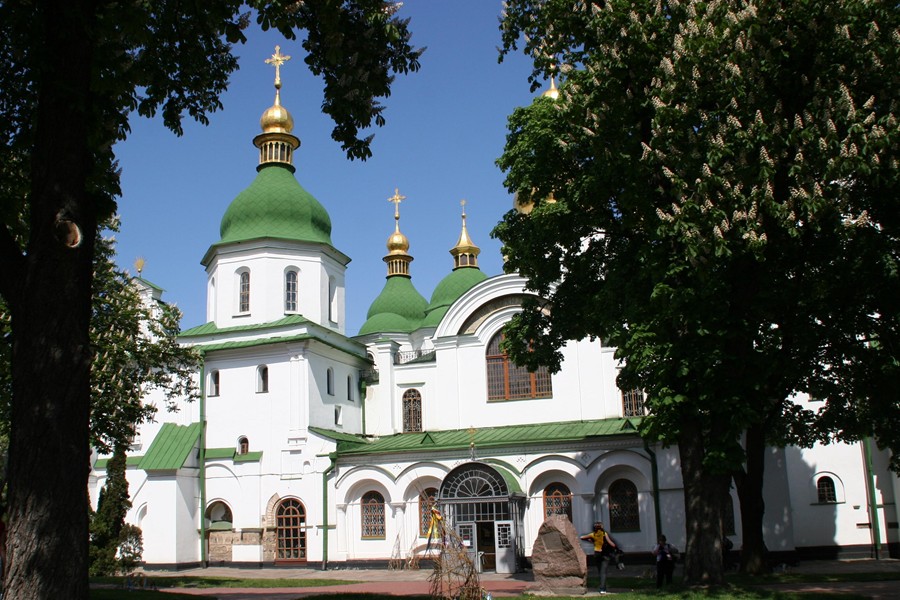
In the courtyard nearby they have a carillon, which every child encountering it needed to smack around. Detail:

I can't remember exactly where this is—I think it's Kontraktova Square—but I remember it was beautiful. Note the chestnut trees in full bloom on the right. That's Kyiv in spring for you.
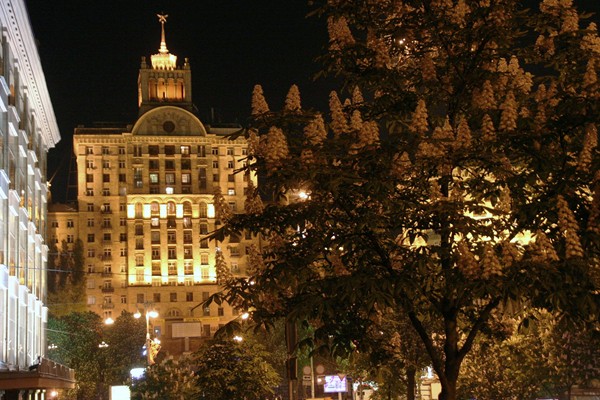
No one should visit Kyiv without seeing the Kievo-Percherska Lavra (Києво-Печерська лавра), the Monestery of the Caves, founded in 1015:
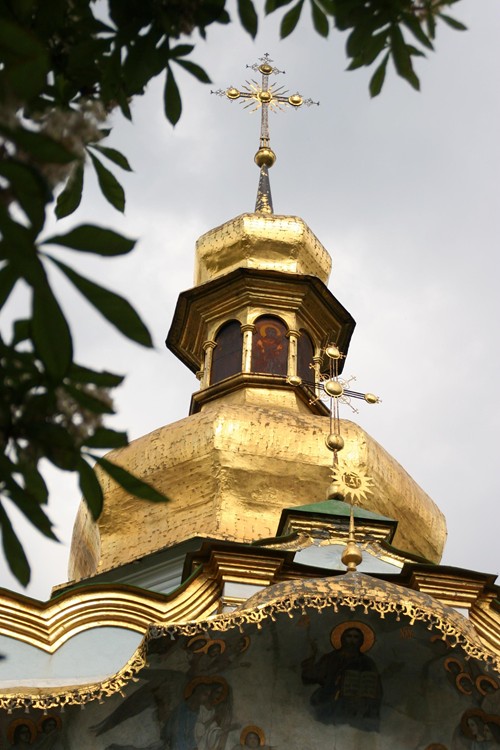
We didn't go into the caves (and I couldn't have photographed them anyway), but we did explore the grounds. (For what it's worth, Lonely Planet recommends getting there early and going straight to the caves. Next time.)
Complete view of the main entrance to the upper Lavra:
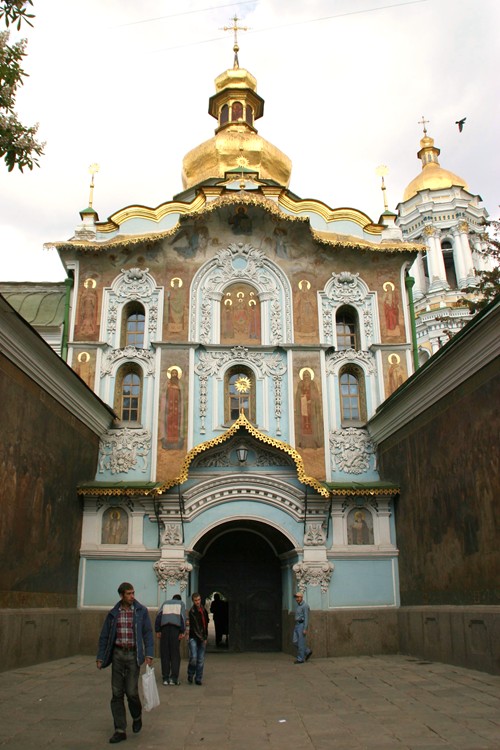
Dormition Cathedral:

Tom Vanderbilt on Slate points out that U.S. rail travel was better in the Harding administration than it is today:
[T]he most striking aspect of [1940s train timetables] is found in the tiny agate columns of arrivals and destinations. It is here that one sees the wheels of progress actually running backward. The...Montreal Limited, for example, circa 1942, would pull out of New York's Grand Central Station at 11:15 p.m., arriving at Montreal's (now defunct) Windsor Station at 8:25 a.m., a little more than nine hours later. To make that journey today, from New York's Penn Station on the Adirondack, requires a nearly 12-hour ride. The trip from Chicago to Minneapolis via the Olympian Hiawatha in the 1950s took about four and a half hours; today, via Amtrak's Empire Builder, the journey is more than eight hours. Going from Brattleboro, Vt., to New York City on the Boston and Maine Railroad's Washingtonian took less than five hours in 1938; today, Amtrak's Vermonter (the only option) takes six hours—if it's on time, which it isn't, nearly 75 percent of the time.
What happened? I put the question to James McCommons, author of the forthcoming book Waiting on a Train: The Embattled Future of Passenger Rail Service. As with most historical declines, there is no single culprit but rather a complex set of conditions.
In sum, cars, trailer trucks, and airplanes happened. On the other hand, as Vanderbilt mentions, other countries seem to manage. The Madrid to Barcelona train in Spain (which travels mainly on the plain) gets passengers between the cities quickly enough to compete seriously with air travel. Imagine if the Acela went near its top speed from Washington to New York, and got people to Penn Station in under two hours. Do you think the Delta Shuttle would have problems competing against that?
Interesting article.
I had the good fortune to stay with friends in an apartment building constructed only in the last few years. Much of the housing stock in Kyiv reaches back to Soviet times, showing individuality only by varying levels of maintenance performed by each owner. Fortunately, many of these apartment buildings have given way to newer ones. They're still...how does one say?...ugly:
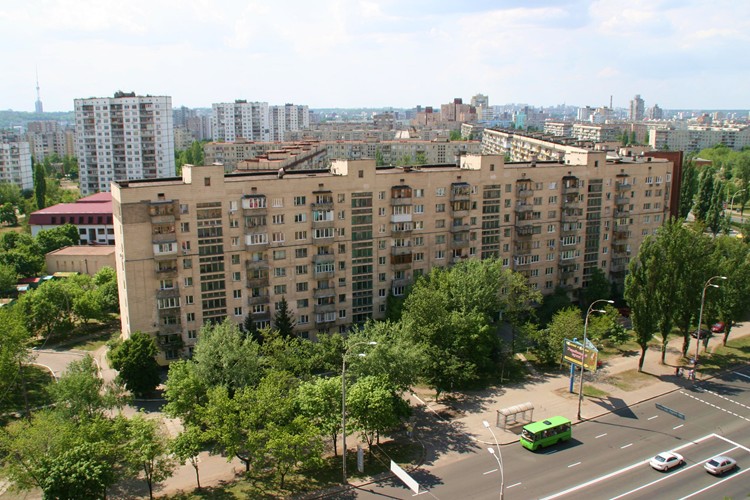
In one of the oldest section of the city, Podil, the mix of pre-Soviet buildings and modern advertising looks a lot more like Western Europe. Here's a view of vul Petra Sahaydachnoho from a cafe near Poshtova Square:

I found myself distracted today by 22°C sunny weather and a 3-hour client meeting. Moving on: more photos from Kyiv, of St. Michael's monastery (Михайлівський золотоверхий монастир):

I don't think we're in Kansas anymore, Toto.
Incidentally, you have to be this tall to go on this ride:

(Yes, it's cliché, but sometimes the classics are best.)
First shot from the mystery destination:
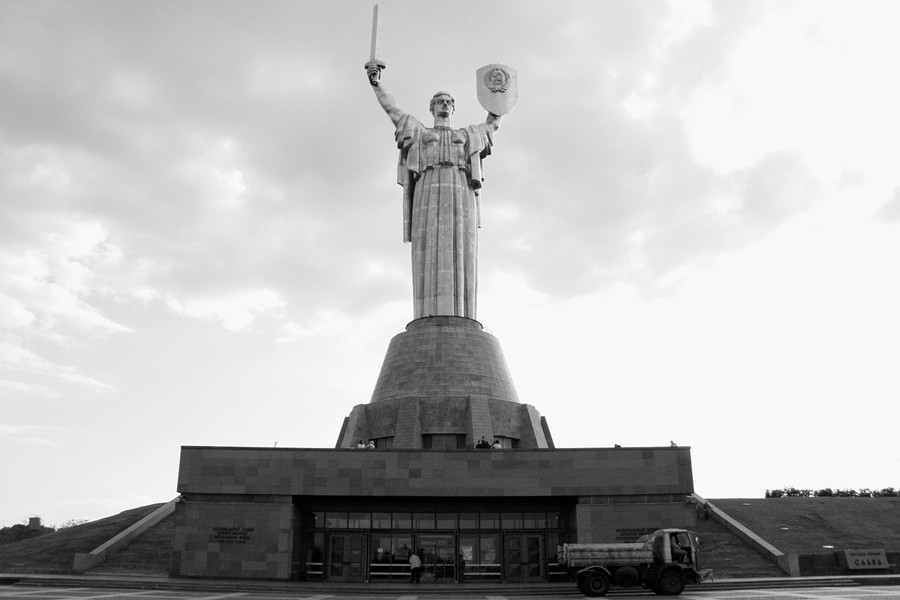
This is the Мати-Батьківщина (Mat-Batkivshyna, or Mother Motherland), part of the Great Patriotic War memorial just southeast of the center of Kyiv, Ukraine.
Lonely Planet asserts the nickname of this statue is "Tin Tits," but my host, who is native Ukrainian and has lived in Kyiv for years, believes LP made this up.
Many more to follow.
After returning home yesterday evening, I'm now caught up on my email (including the 2,400 server status messages and 4,400 spams caught by my filter, my sleep, and Parker's walks. Now I'm going through the several hundred photos I took, so watch for those over the next few days.
But where, in fact, did I go? Ah. That's still a mystery. But here's a clue: this photo, from last Thursday morning's approach to the first airport I saw that day, shows an eyeful—including the spot where thousands of trains have met their Waterloo:

More, I hope, later today.
On the morning of the penultimate day of my trip, I'm checking in with U.S. news only to discover...it's been kind of quite. I'm glad Chicago is getting Federal funding for road repair, and the Cubs have at least stayed above .500. But...were there any major news events?
Maybe it's a normal week, and it only seems quiet because I'm 6,000 km away. That, then, seems like a good vacation.
That's part of the fun in traveling 8 time zones away. More on that later.
Meanwhile, my poor jet-lagged brain now has to accept that Parker may not actually love me, though he does a really good job convincing me he does.